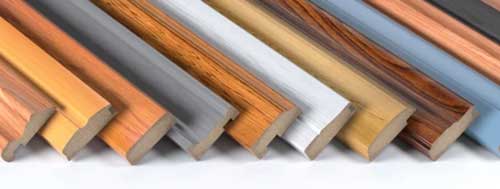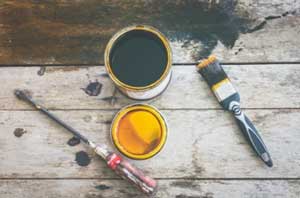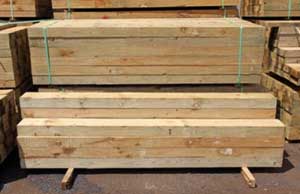What Are Different Types Of Timber

There are many different types of timber, but some of the most common include:
- Pine: A softwood that is light in color and has a straight grain. It is easy to work with and is often used for construction, furniture, and flooring.
- Oak: A hardwood that is strong and durable. It has a dark color and a grain that is often used in cabinetry and furniture.
- Maple: A hardwood that is light in color with a grain that is often used in flooring and furniture.
- Cedar: A softwood that has a distinct smell and is often used for outdoor projects such as decks and fences.
- Walnut: A hardwood that is dark in color with a grain that is often used in furniture and cabinetry.
More items:
- Bamboo Timber.
- Birch Timber.
- Cherry Timber.
- Cross-laminated Timber.
- Glulam Timber.
- Green timber Timber.
- Lime Timber.
Timber Treatment Chemicals

The following chemical wood preservatives have been registered for use in treating wood destined for the domestic lumber and timber market:
- The anti sap stain Taratek and Hylite.
- Salts of copper-chromium-arsenic, including Tanalith C and CCA Oxide.
- Organotect and Protim LCWR are two examples of organic solvents that are low in weight (LOSP).
- Boron salts, such as Diffusol and Tanalith E.
- Alkyl ammonium preservatives, such as Mokubo AAC and ACQ for Timber Treatment.
Losp Treated Timber
The LOSP treatment guards against insects and deterioration by employing a solvent containing copper naphthenates and synthetic pyrethroids that commonly have a white spirit basis.
How Does It Work?
LOSP solvent is used to pressurize the wood. Instead of just covering the wood, the solvent permeates it (envelope treatment). For 25 years, this penetration shields the wood from moisture, termites, and degradation.
For outdoor application, a green pigment is added to the mixture. Each stick is an H3 hazard for above-ground outdoor areas. To make our LOSP solvent 30 times less smelly, we collaborated with Lonza.
Australian Standards For Timber Treatment
The Australian Timber Preservation Standards AS or AS/NZS 1604 series contains the industry requirements for timber preservation that are necessary to safeguard timber used in Australia against native species of decay organisms and insect pests (Australian Standard 1604). The Australian Standard 1604 contains these requirements.
Types Of Timber Treatment Nz
There are a number of timber treatment options available in NZ. Here are some of the most popular methods:
| H1 | Unweathered wood treatment that poses less risk. It is utilized to frame interior walls and wood. two divisions. |
| H1.1 | Dry, protected, and borer-resistant wood |
| H1.2 | The wood used is weatherproof but prone to deterioration environments. |
| H2 | This level adds an insecticidal treatment for Australian termites and is comparable to H1. |
| H3 | when wood, but not the ground, is exposed to the elements. This also has divisions. |
| H3.1 | Timber that is exposed to the elements above ground and utilized in non-structural applications, such as fascia boards and weatherboards. |
| H3.2 | Outdoor, above-ground wood structures like decks, fences, and pergolas may all harbor water. |
| H4 | High-degradation areas include those near ground contact or freshwater. used for landscaping and fence. |
| H5 | used in cases of extreme decay hazard risks, like ground contact in moist conditions. End uses for the material include retaining walls, crib walling, and supports for horticulture. |
| H6 | class of marine hazards. Submerged maritime and jetty parts, including fenders and pier piles. |
Types Of Timber Treatment Uk
Our specialists have a vast understanding of wood repairs and related treatments. We provide wood repairs that are of the best quality, most dependable, and specifically tailored to your property’s needs.
As part of this service, we will assist you in understanding the type of wood required for specific applications and the various levels of treatment required in different situations. This is defined under Use Classes in BS EN 335-1. These are decided by the likelihood that they may be threatened by moisture, woodworms, or other wood-eating insects.
BS EN 335-1 Use Classes
- Use Class 1 – Anticipated dry conditions and internal application, such as upper floor joists
- Use Class 2, which is still internal but presents a higher risk of dampness owing to hazards such as plumbing leaks.
- Use Class 3 materials outside, such as wood decking, but keep them above the ground.
- Use Class 4 timbers, including fence posts, in direct contact with the soil or water.
What Is Wood Creosote And Creosote Preservative

Creosote is made by distilling tar from coal or wood. It is used to keep wood from rotting. Creosote is the active ingredient in some pesticides that can stop termites, fungi, mites, and other pests from damaging outdoor wood like railroad ties and utility poles.
Where To Buy Creosote Wood Preservatives
There are a few different places where you can purchase creosote wood preservatives. You can find it at your local hardware store, online, or at a specialty store that sells woodworking supplies.
Timber Treatment Plant
Using timber treatment plants, wood is impregnated with a range of preservatives and/or fire retardants. The vessel is called an autoclave because lumber is placed within it and impregnated with a preservative under pressure.
Boron Timber Treatment
Woodworm and other wood-boring insects can be effectively treated using borate, a water-soluble wood preservative that has been the subject of intensive study over the past 50 years.
Boron is used by certain hardwood species as a preservative to protect their sapwood, which is susceptible to borer attack. Disodium & nbsp;octaborate tetrahydrate, the active ingredient of boron-based wood preservatives, is a naturally occurring chemical that provides no threat to the environment and is not toxic to mammals in minute amounts.
Creosote Timber Treatment
Creosote is made by distilling tar from coal or wood. It is used to keep wood from rotting. Creosote is the active ingredient in some pesticides that can stop termites, fungi, mites, and other pests from damaging outdoor wood like railroad ties and utility poles.
Green Timber Treatment
Green-treated (also known as pressure-treated) wood has had preservatives pumped into it under pressure to protect it from insect and microbiological attacks. Alkaline Copper Quaternary (ACQ) is the most often used preservative now. Copper in the solution gives the wood its green color; as the wood dries and responds to sunlight, the color fades to gray.
Brown-stained or cedar-toned lumber is either ACQ lumber or lumber that has been treated with CA (Copper Azole).
When purchasing pressure-treated wood, it is essential to recognize that different levels of chemical retention have occurred. Common grades include ground contact, above-ground, and below-ground contact; choose the suitable material for the project. Avoid lumber and landscaping timbers labeled or tagged as “treated to rejection”; the phrase is imprecise and provides no assurances regarding the treatment’s quality.
Different Types Of Treated Timber

- Boron-treated lumber
- grayish pine
- The light organic solvent used as a wood preservative (LOSP)
- Copper-based alternatives to CCA
- Creosote.
- Copper arsenic chromite (CCA)
Types Of Timber Support
Timber Props
In order to hold up the roof in a mine, wooden support should be erected, and it should slightly budge under the weight of the roof. When a weight is applied along a wooden prop’s length, it is most powerful. A prop by itself is nearly inflexible, but it can be made more flexible by adding a lid to the top to serve as a cushion between the roof and the end of the prop and by making it thinner at the bottom or top.
Timber Bars
Barrels are beams. A 500mm-deep timber beam is put into a coal pillar if its sides are sound. Vertical props are employed if the sidewalls are flimsy. If the bar has a circular cross-section, the prop’s top end needs to be hollowed out. The ends of the bar can also rest on the flat ends of the props. Maximum roof contact should be provided by tightly positioned bars. For uneven roofs, flat wooden leggings are used.
Safari Supports
Crossbars made of wood have always been used to support galleries in coal mines. To fix these crossbars, you have to use a crawbar to drill holes by hand into the coal pillars. One crossbar takes between two and five hours to fix. The safari support is made of two clamps made of mild steel that hold the crossbar that holds up the roof.
Wooden Cog, Chock or Crib
A chock, cog, or chockmate is a collection of sleepers piled in a crisscross pattern on top of one another. It is utilized in areas where the ceiling is inadequate over a substantial component of the room and supports a significantly greater stretch than a prop. Where major roadways must pass through an area with inadequate-sized coal pillars, cogs are also constructed. Between each of the four corner support posts, a chock is constructed. Except in exceptional circumstances of roof damage, such corner supports are normally unnecessary. It is possible to determine if the chock is loose by striking it against the roof.
Types Of Timber Processing
There are many different types of timber processing, each with its own unique set of benefits. Here are some of the most popular types of timber processing:
1. Sawn Timber: Sawn timber is the most common type of processed timber. It is created by cutting logs into rectangular boards using a saw. Sawn timber is easy to work with and is ideal for a variety of construction projects.
2. Planed Timber: Planed timber is a type of processed timber that has been planed or smoothed down. This type of timber is easy to work with and is ideal for creating a clean, finished look.
3. Treated Timber: Treated timber is a timber that has been treated with chemicals or other substances to protect it from the elements. This type of timber is ideal for outdoor use, as it is resistant to rot and decay.
4. Glued Timber: Glued timber is a type of processed timber that has been glued together. This type of timber is strong and durable, making it ideal for a variety of construction projects.
5. Laminated Timber: Laminated timber is a type of processed timber that has been laminated together. This type of timber is strong and durable, making it ideal for a variety of construction projects.
How Many Types Of Timber Are There
The type of Timber you use depends on the project at hand. Common Timber types include:
- Pine
- Oak
- Cedar
- Maple
- Birch
Every type of wood has distinct features, therefore it’s crucial to choose the perfect one for your project. Pine, a softwood that’s easy to deal with, isn’t as sturdy as other alternatives. Oak is a tough hardwood, but it’s difficult to deal with. Cedar is easy to work with and quite strong. Maple is a firm, robust wood, yet it’s tough to deal with. Birch is a hard, easy-to-work-with wood.
How To Get Rid Of Timber
There are a few ways to get rid of timber:
- Hire a professional company to come and remove the timber for you.
- Rent a chipper and chip the timber yourself.
- Take the timber to a local dump or landfill.
- Sell the timber to a lumber company.


